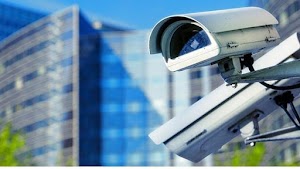Every security camera has a lens, but not all lenses work the same way. The choice between fixed and varifocal lenses affects everything from image quality to installation costs.
Understanding this difference helps you choose cameras that actually deliver the coverage you need instead of leaving blind spots or wasting money on unnecessary features.
Summary: Choose fixed lens cameras when you need reliable, cost-effective monitoring with predictable coverage requirements. Choose varifocal cameras when you need flexibility to adjust views remotely, face uncertain coverage needs, or have limited mounting options. Fixed lenses are simpler and more reliable; varifocal lenses cost more but prevent expensive camera additions when requirements change.
Camera Lens Fundamentals
Think of a camera lens like your eyes focusing on different distances. A fixed lens works like reading glasses – optimized for one specific distance with a set field of view. Once installed, what you see is what you get.
Varifocal lenses function more like adjustable binoculars. You can zoom in for detailed views of distant objects or zoom out for wider area coverage. This flexibility comes with motorized controls that let you adjust remotely.
The focal length determines how much area the camera covers and how detailed distant objects appear. A 2.8mm lens captures a wide area but shows less detail at distance. A 12mm lens focuses on a narrower area with much better detail for distant subjects.
Fixed lenses lock you into one field of view permanently. Varifocal lenses let you adjust the view as needed, whether that’s during initial setup or months later when your surveillance needs change.
Fixed Lens Cameras: Straightforward and Reliable
Fixed lenses come in standard focal lengths like 2.8mm, 4mm, 6mm, and 12mm. Each provides a specific field of view that you can calculate before installation. A 2.8mm lens mounted 10 feet high covers roughly 50-60 feet width, while a 12mm lens covers about 15-20 feet width at the same mounting height.
This predictability makes planning easier. You know exactly what coverage to expect, so positioning multiple cameras becomes a matter of mapping overlapping fields of view to eliminate blind spots.
Installation stays simple too. Mount the camera, aim it at your target area, and you’re done. No adjustments needed, no fine-tuning required. The camera focuses consistently on its designed distance range without drift or mechanical issues.
Cost advantages extend beyond the initial purchase price. Fixed lens cameras typically cost less than varifocal models, and installation takes less time since there’s no setup adjustment required. Less complexity means fewer potential failure points over time.
However, fixed lenses demand accurate planning. Get the focal length wrong, and you might end up with a camera that can’t see the detail you need or covers the wrong area entirely. Moving a fixed lens camera to adjust coverage requires physically relocating the entire unit.
Varifocal Technology: Flexibility at a Price
Modern varifocal cameras use motorized adjustment systems that you control remotely through software. Common zoom ranges include 2.8-12mm or 5-50mm, giving you significant flexibility in field of view adjustment.
This technology shines during installation. Instead of calculating exact coverage beforehand, you can mount the camera and then adjust the view to match your specific needs. See too much unnecessary area? Zoom in for better detail. Missing important coverage? Zoom out for a wider view.
Remote adjustment means you can fine-tune coverage without climbing ladders or repositioning cameras. Seasonal changes like tree growth, new construction, or altered lighting conditions become manageable through simple software adjustments rather than hardware changes.
The flexibility helps with future modifications too. Business layout changes, new security concerns, or different monitoring priorities can often be addressed by adjusting existing varifocal cameras instead of installing additional units.
But this capability comes with higher initial costs. Varifocal cameras cost more than fixed lens equivalents, and installation takes longer due to the adjustment process. The motorized mechanisms also introduce potential mechanical failure points that don’t exist in fixed lens systems.
Making the Right Technical Decision
Start with an honest assessment of your coverage needs. Surveillance Technology offers a free site assessment to help clients with this. Do you need to monitor a consistent area with predictable requirements? Fixed lenses probably make more sense. Are you dealing with changing requirements, uncertain coverage needs, or areas where precise field of view matters more than cost? Varifocal systems offer advantages worth the extra expense.
Consider your mounting options carefully. Limited mounting positions favor varifocal cameras since you can adjust the view to work with available locations. If you have flexibility in camera placement and clear sight lines to your target areas, fixed lenses work perfectly well.
Budget planning should include both short-term and long-term costs. Varifocal cameras cost more initially but might save money over time if you need coverage adjustments. Fixed lens systems cost less upfront but might require additional camera installations if your needs change.
Installation Planning Makes the Difference
Site preparation differs significantly between lens types. Fixed lens installations require precise planning to ensure proper coverage without blind spots. You’ll need to calculate fields of view, identify optimal mounting positions, and coordinate multiple cameras to avoid coverage gaps.
Varifocal installations offer more forgiveness during planning but require more time during setup. You can mount cameras in approximate positions and fine-tune coverage during configuration. This flexibility helps when dealing with architectural or cabling constraints or uncertain requirements.
Testing procedures vary too. Fixed lens cameras need verification that coverage matches your planning calculations. Varifocal systems require adjustment confirmation and documentation of final settings for future reference.
Weather and Environmental Considerations
Both lens types handle environmental conditions similarly, but varifocal systems have additional considerations. Motorized components can be affected by extreme temperatures or humidity. Salt air environments might impact mechanical adjustment mechanisms over time.
Fixed lenses eliminate these concerns entirely. No moving parts means consistent performance regardless of weather conditions. This reliability advantage becomes important for critical security applications where consistent operation matters more than adjustment flexibility.
Long-term Operational Differences
Maintenance requirements differ between systems. Fixed lens cameras need basic cleaning and occasional weatherproofing checks. Varifocal systems require the same basic maintenance plus periodic verification that adjustment mechanisms work properly.
Software updates affect varifocal systems more than fixed lens cameras. New features or adjustment capabilities might become available through firmware updates, extending system usefulness over time.
Documentation becomes more important with varifocal systems. Recording final adjustment settings helps with troubleshooting and maintenance. Fixed lens systems need basic installation documentation but don’t require ongoing configuration records.
Choosing Your Approach: Comparison Chart
| Feature | Fixed Lens Cameras | Varifocal Cameras |
|---|---|---|
| Focal Length Options | Standard fixed lengths (2.8mm, 4mm, 6mm, 12mm) | Adjustable ranges (2.8-12mm or 5-50mm typical) |
| Field of View | Locked permanently, predictable coverage | Adjustable remotely via software |
| Installation Complexity | Simple – mount, aim, and done | More complex – requires adjustment and fine-tuning |
| Initial Cost | Lower purchase price and installation time | Higher cost for equipment and installation |
| Planning Required | Precise pre-installation coverage calculations needed | More forgiving – can adjust after mounting |
| Adjustment Capability | None – requires physical relocation to change view | Remote zoom adjustments without moving camera |
| Mechanical Components | No moving parts | Motorized adjustment mechanisms |
| Maintenance | Basic cleaning and weatherproofing checks | Same as fixed plus periodic mechanism verification |
| Reliability | Consistent performance, fewer failure points | Additional potential mechanical failure points |
| Environmental Concerns | Handles all conditions equally | Motorized parts affected by extreme temps/humidity |
| Best For | Predictable coverage needs, clear sight lines, budget-conscious installations | Changing requirements, limited mounting options, uncertain coverage needs |
| Long-term Flexibility | Requires new cameras for coverage changes | Can adapt to new needs through software adjustments |
| Documentation Needs | Basic installation records | Requires configuration settings documentation |
The right lens type depends on balancing flexibility against cost and complexity. Fixed lenses work excellently when you know exactly what coverage you need and don’t anticipate changes. They’re reliable, cost-effective, and simple to maintain.
Varifocal lenses make sense when coverage requirements aren’t completely defined, when mounting locations limit your options, or when you need the ability to adjust coverage over time. The extra cost brings genuine flexibility that can prevent expensive camera additions later.
Consider assessing your specific situation with a professional surveillance company like Surveillance Technology. A retail environment with predictable monitoring needs might benefit more from reliable fixed lens cameras. A facility with changing security requirements or complex sight lines might justify varifocal systems. Our decades of experience means we have designed systems across every industry and know what questions to ask so your surveillance system is as effective as you need it to be.
Professional site assessments help clarify which approach works best for your particular circumstances. Understanding your exact coverage needs and constraints makes the lens choice obvious rather than guesswork. Contact us to schedule yours today.














